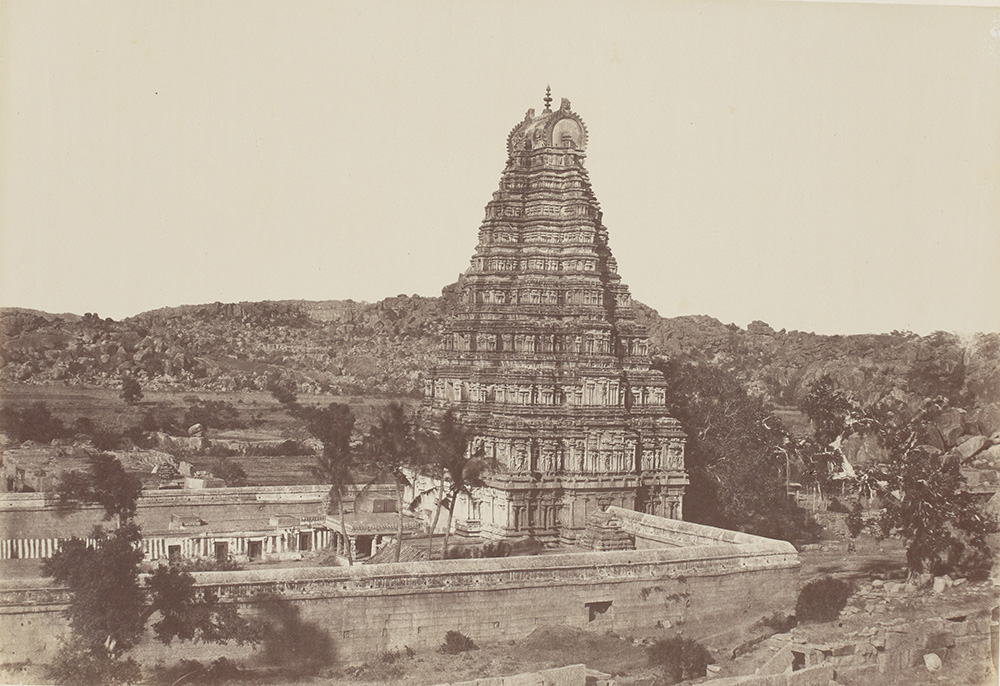
‘Gopuram of the Virupaksha Temple, Vijayanagara’, 1857 by William Henry Pigou © Sarmaya Arts Foundation
Temples were the original sky-scrapers, built to soar above the humble dwellings of mortal men. The early cave temples were more earthy affairs designed to provoke introspection and aid the journey inward with dark, womb-like passages and a rudimentary sanctum. Around the 5th Century CE, free-standing, structural temples started to be built in the subcontinent and these places of worship began to enjoy a prolonged upswing in popularity. Funded by kings who sought legitimacy with their proximity to divine power and worshipped by a growing number of believers, the once-modest Hindu temple started to acquire serious political and social clout. This demanded grander, more awe-inspiring exteriors that would announce its supremacy to the world.
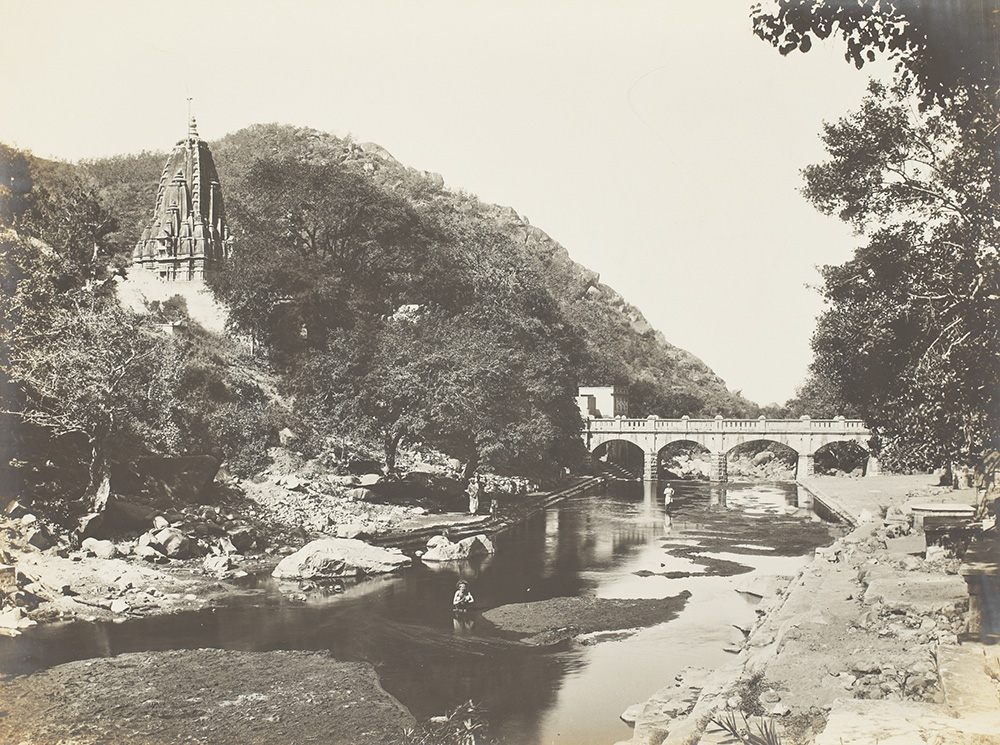
‘The Damodar Kund bridge with Damodarji’s Temple, Junagadh’, 1900 by Solankee Studio © Sarmaya Arts Foundation
It’s interesting to see how this trend travelled through the length and breadth of what we know as India today to find different forms of architectural expression in different regions. One of the most striking ways in which temples in India announce their provenance is with the spires that loom over the rest of the structure, and indeed, most of the neighbourhood. This is where a marked North-South divide makes itself felt.
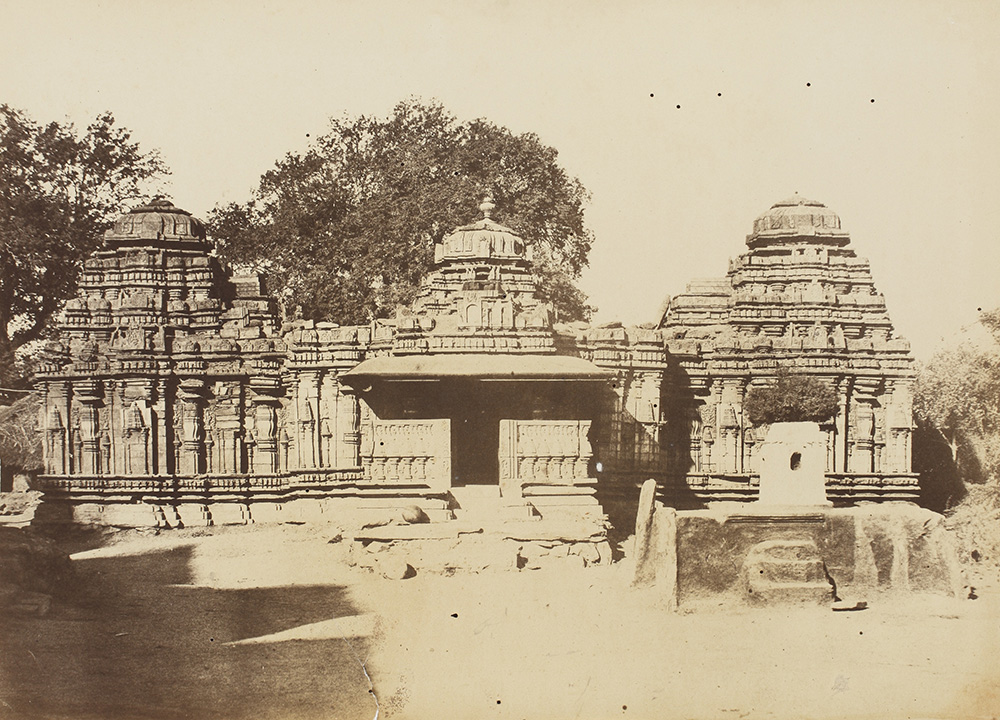
‘Hurulhully—the Temple at Someshwur’, from an album of photographs from the regions of Mysore and Dharwar, 1857 by William Henry Pigou © Sarmaya Arts Foundation
First, a little note on what Hindu temples all have in common. A garbagriha or inner sanctum housing the idol of the main deity. A mandapa or hall in front of the sanctum where devotees can gather. A vahan or mount of the main deity placed before the sanctum. So far, so similar. But zoom out a bit and things get interesting.
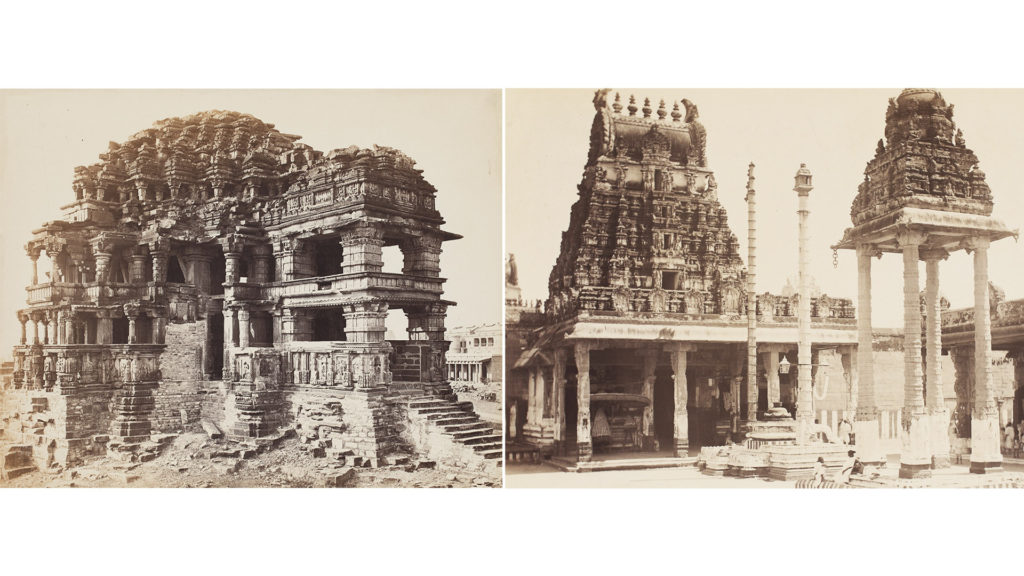
On the left is the Sahastrabahu or ‘Sas-bahu’ temple in Gwalior, and on the right, the Varadaraja Perumal temple in Kanchipuram. Both are shrines to Lord Vishnu, both built in the 11th Century AD—the first in the Nagara style prominent in the north of India, and the second in classic Dravidian style. Images © Sarmaya Arts Foundation
The Nagara style of temple architecture was favoured in the northern regions of the subcontinent. It’s characterised by a couple of features: the temple would be built on a raised platform, with more than one flight of stairs leading up to it. The highest point is called the shikhara and the highest shikhara is found directly above the garbagriha. The shikhara is topped with a kalasa or golden pot signifying fertility, and directly under this is found the amalaka, a fluted disk. A shikhara might rise up steeply, incline more gradually or even taper to a squarish shape, as you will see in the video below.
In contrast, Dravidian temple architecture calls for a boundary wall with a towering entrance called the gopuram. A single temple might have multiple pyramid-shaped gatehouses called gopurams. In Madurai, for instance, the iconic Meenakshi temple is ringed by several boundary walls and fronted by gopurams of varying sizes. In a typical Dravidian temple, the garbagriha is topped by a tower called the vimana, which is not necessarily the tallest peak of the structure—in fact, given that the sanctum is often the most ancient part of a temple, the vimana might be quite diminutive in size. Temples in the south often have tanks attached to them and these contribute to preserving the groundwater levels of the surrounding regions.
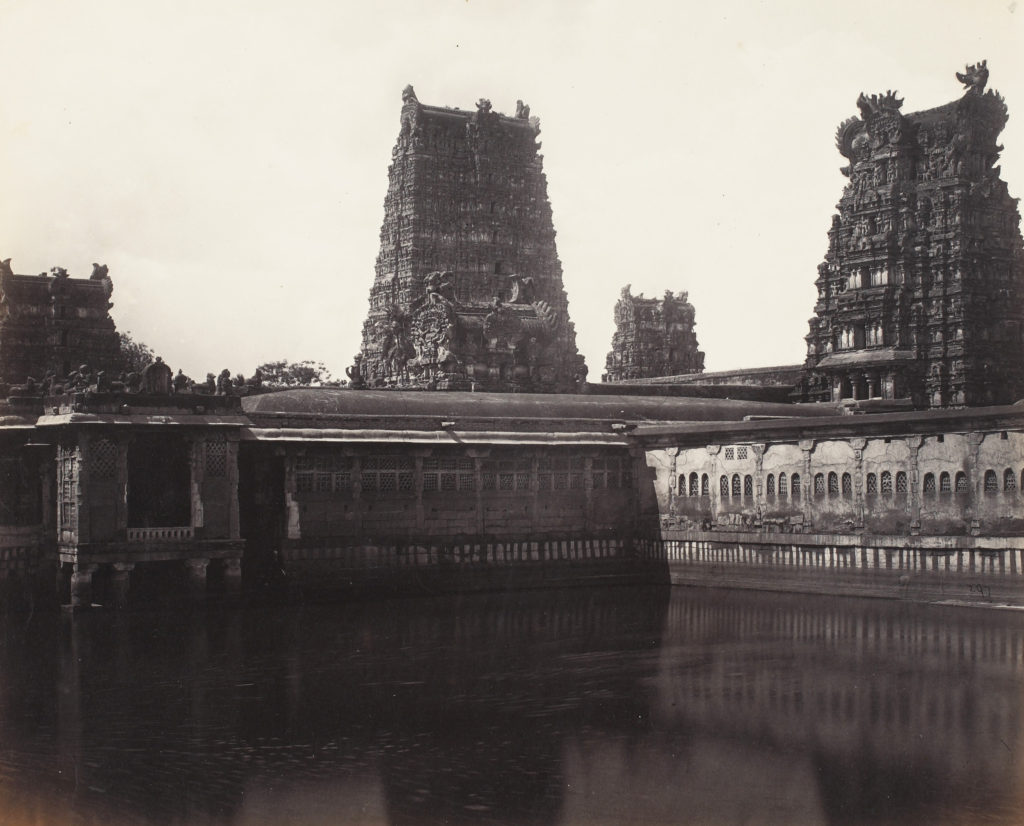
Madurai Meenakshi temple and tank, 1868 by Edmund David Lyon © Sarmaya Arts Foundation
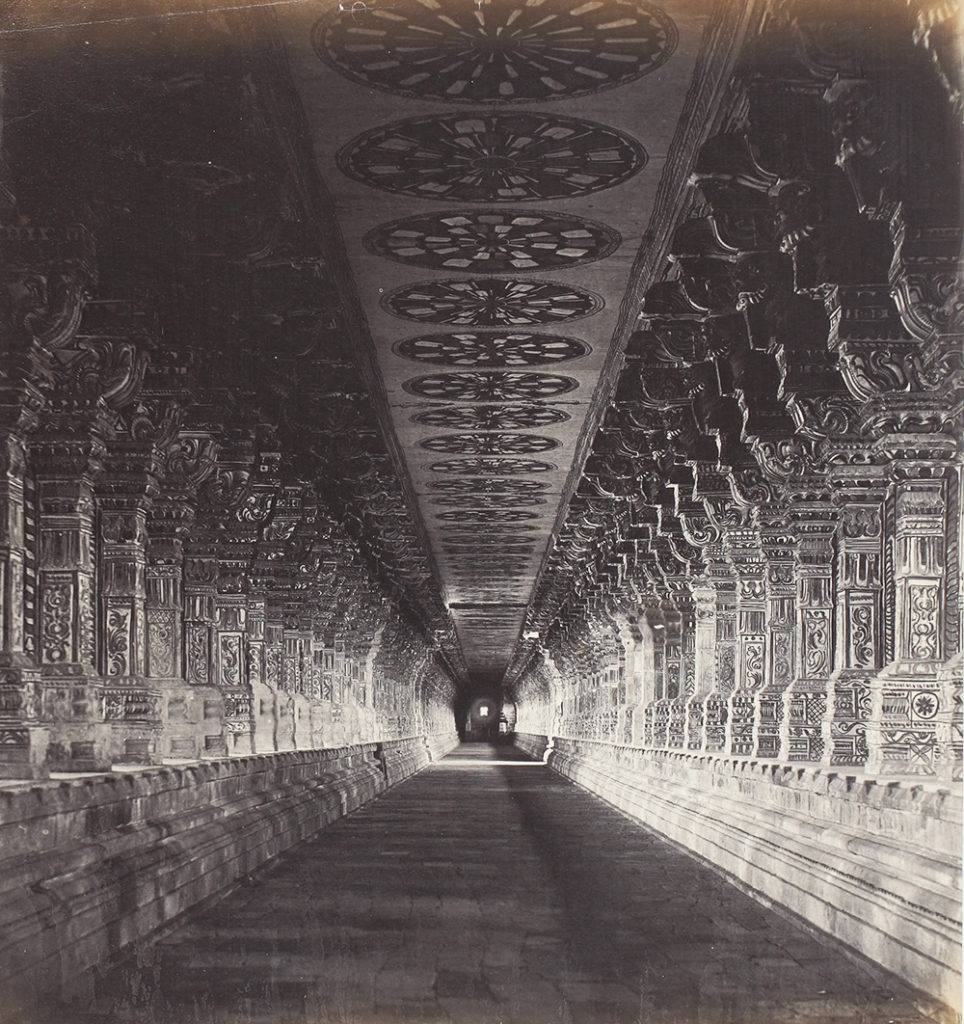
Entrance to the Ramanathaswamy temple, Rameswaram, 1868 by Edmund David Lyon © Sarmaya Arts Foundation
Indian temple architecture also evolved as a fusion of the Nagara and Dravidian schools and this birthed the Vesara style. The Chalukya kings who ruled parts of present-day Karnataka between the 6th and 12th centuries favoured this secular expression, and some of the best examples of their aesthetic are to be found in the Pattadakal temple complex. Situated a little way from Badami, this UNESCO World Heritage Site features stunning shrines to Lord Shiva like the Papanatha Temple, in which the shikhara blooms gracefully to take a pagoda-like shape.
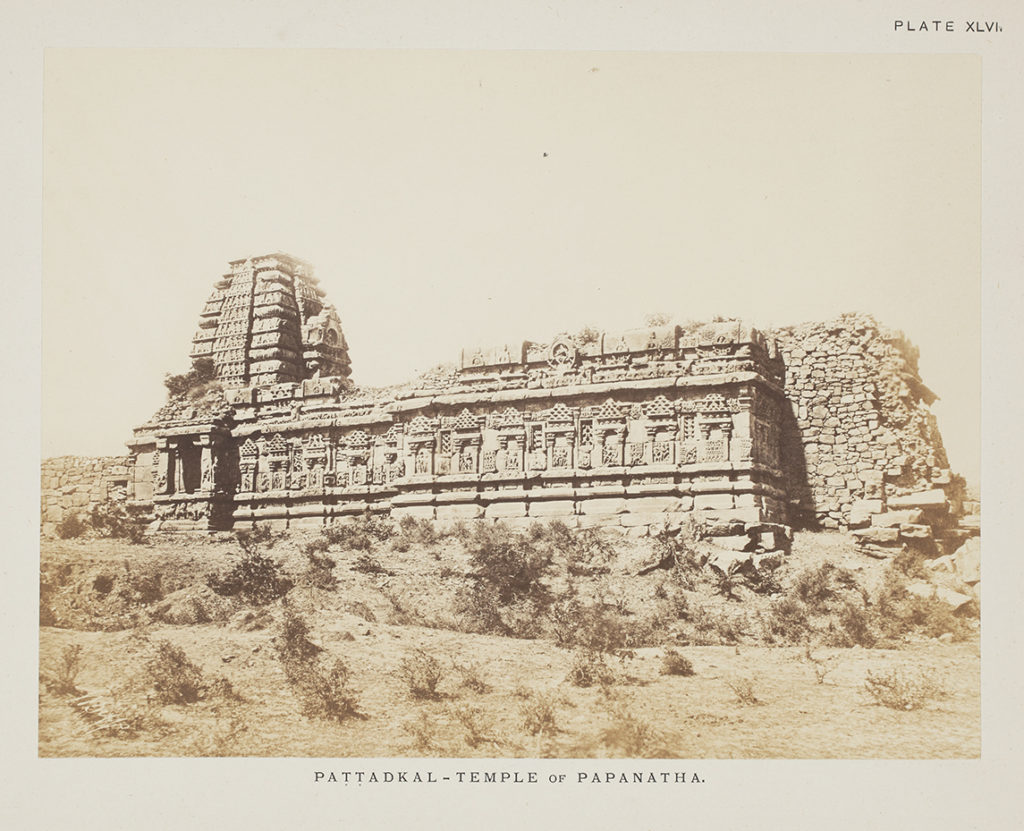
Papanatha temple, Pattadakal © Sarmaya Arts Foundation
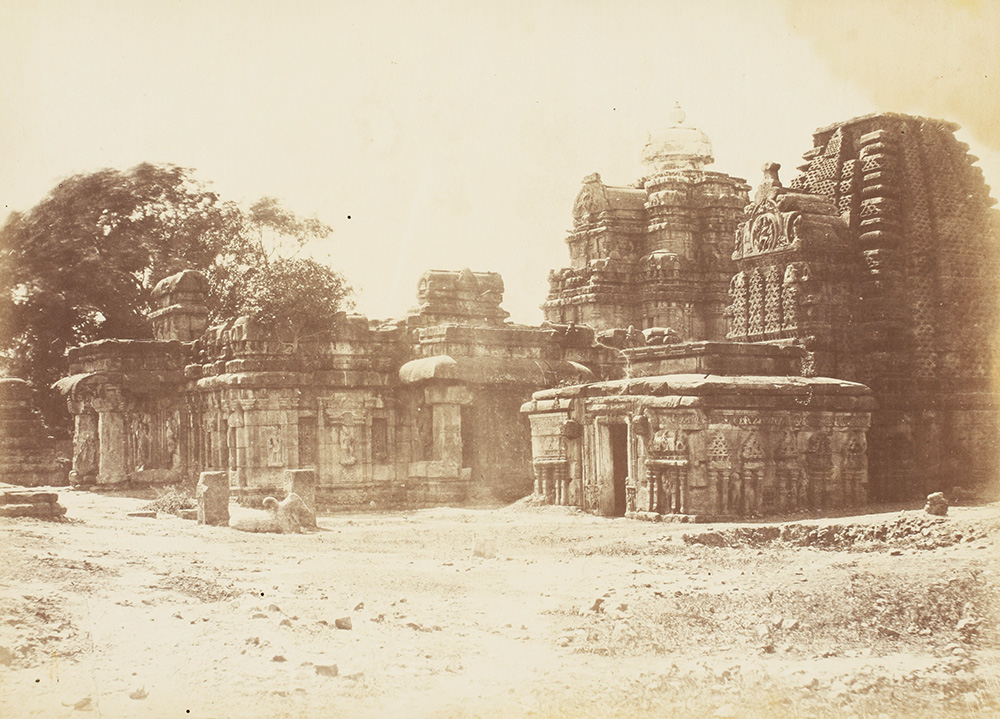
Mallikarjuna temple, Pattadakal, 1855 by Thomas Biggs © Sarmaya Arts Foundation

Banashankari group of temples built by the Badami Chalukyas, Badami, 1855 by Thomas Biggs © Sarmaya Arts Foundation
The three broad categories of Hindu temples mentioned here are by no means a comprehensive list, as each region of the Indian subcontinent gave its own unique twist to temple design. This innovation was led by the tastes of the royal patron who was footing the bill for the project, the construction material available locally and other cultural movements. For instance, the unique arched gateway or torana of the 10th-century Mukteshvara temple to Shiva in Bhubaneshwar points to a distinctly Buddhist sensibility. In this way, Indian temples interacted in a complex way with their surroundings, both dominating the landscape and submitting to a multitude of influences.
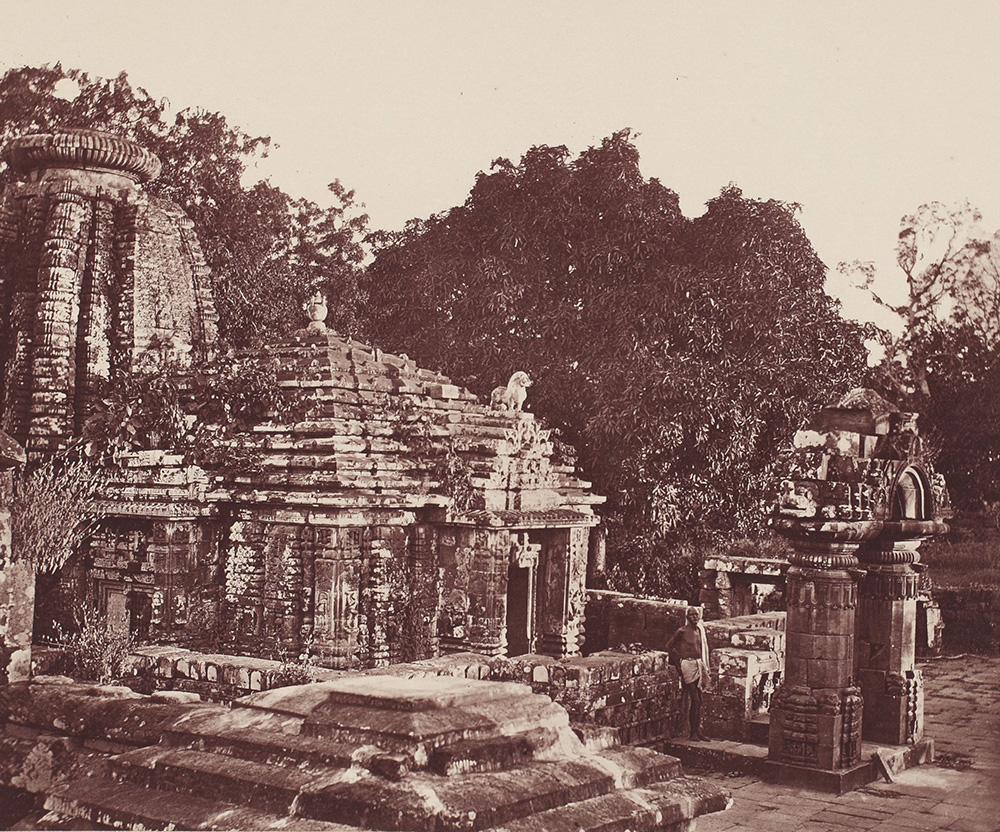
Mukteshvara temple, Bhubaneshwar from the album ‘Antiquities of Orissa’ 1878 © Sarmaya Arts Foundation
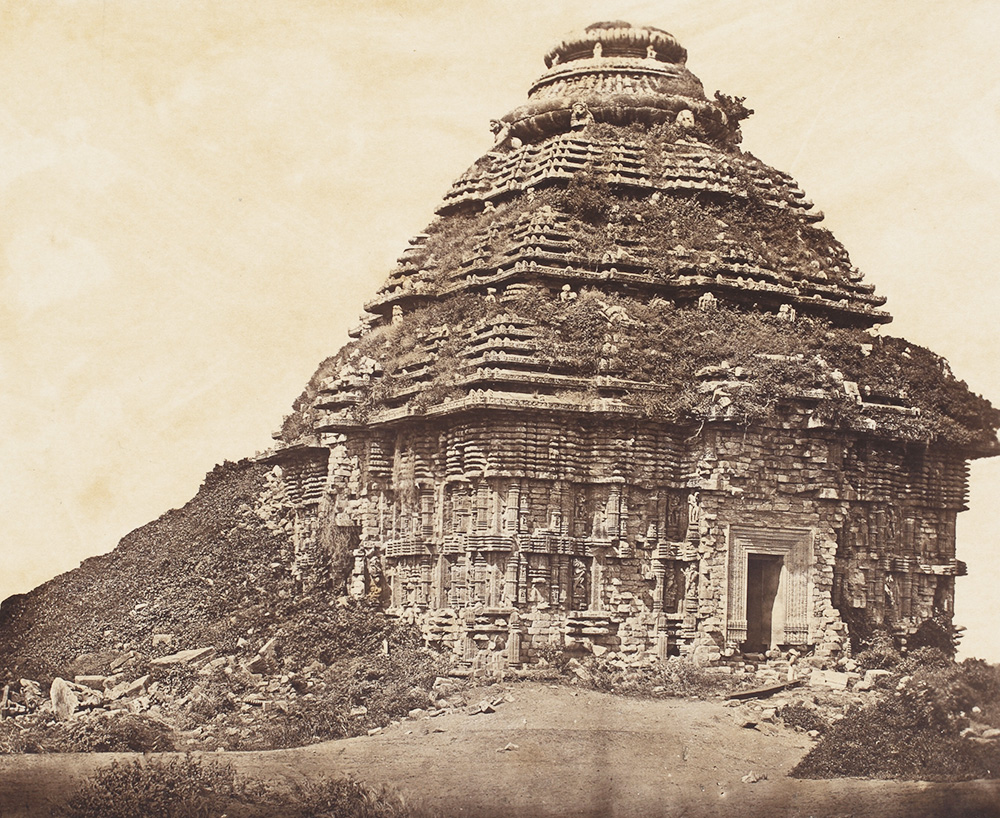
Sun Temple, Konark from the album ‘Antiquities of Orissa’ 1878 © Sarmaya Arts Foundation



